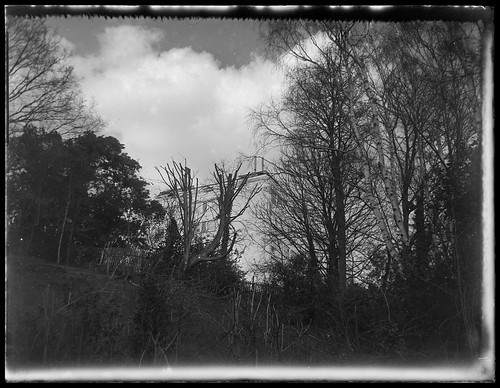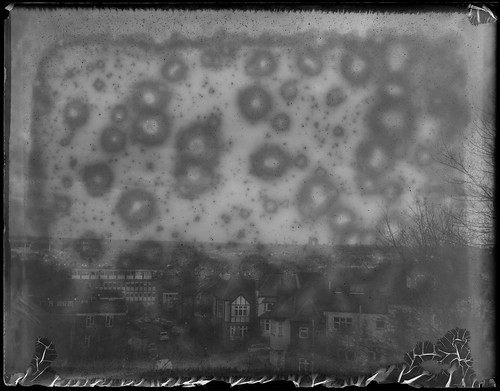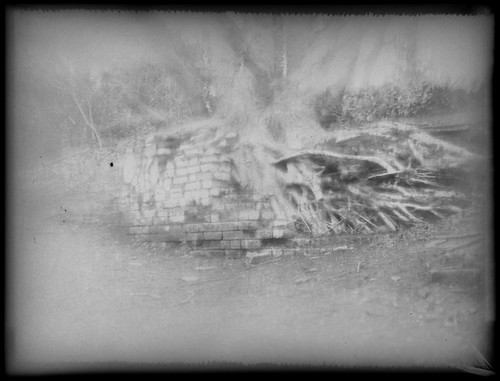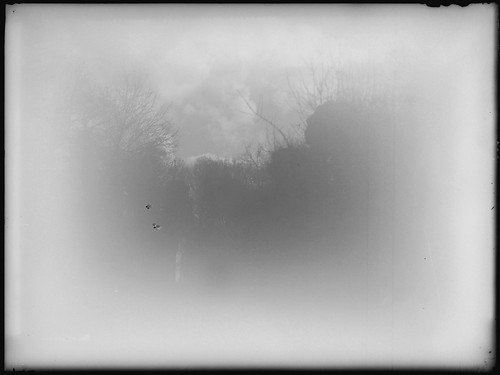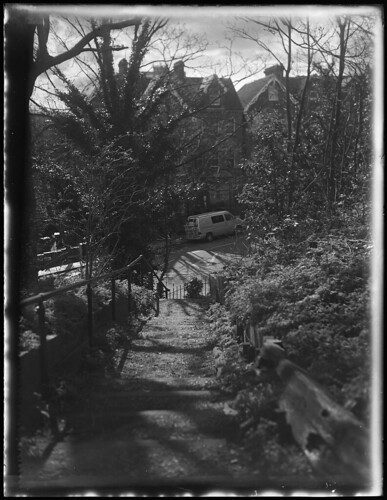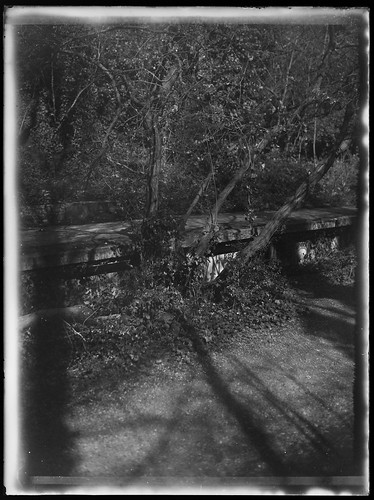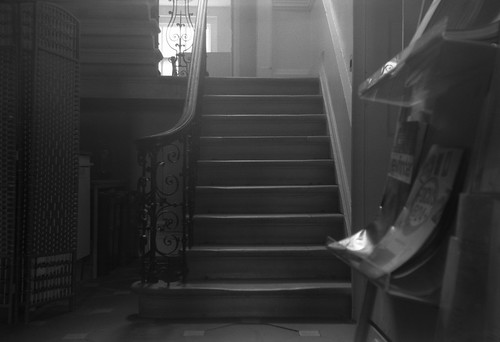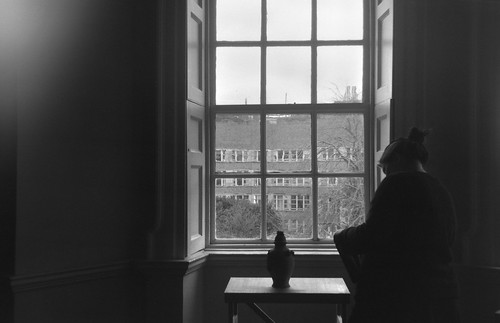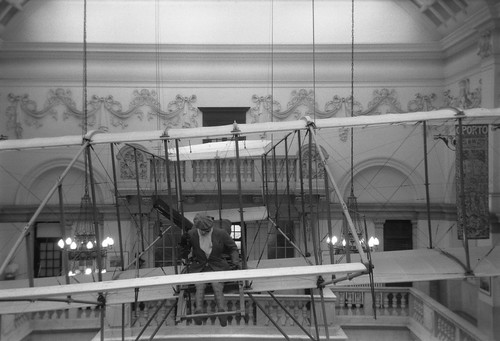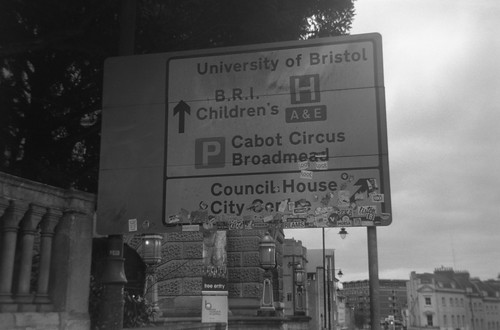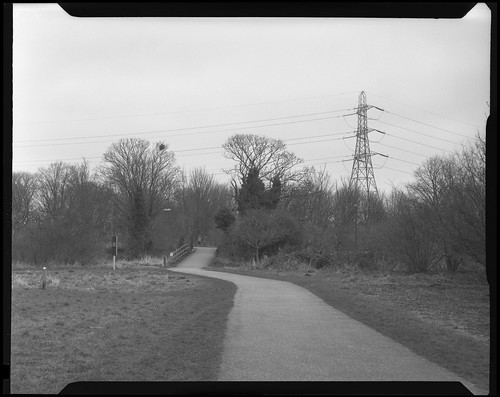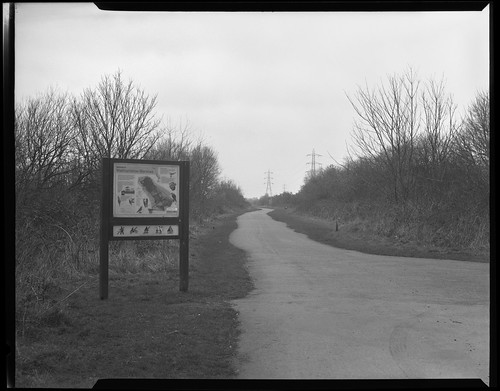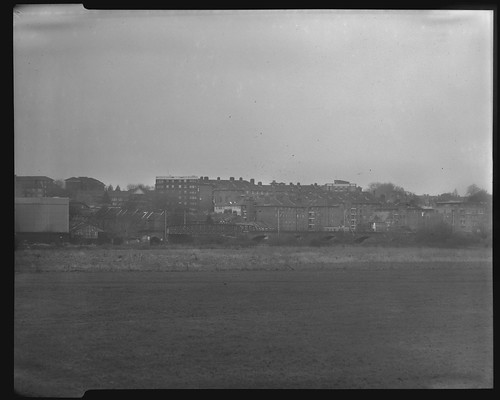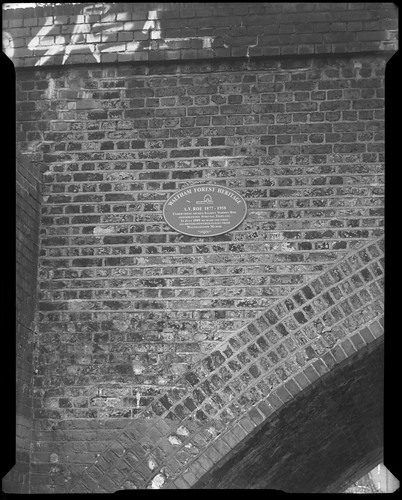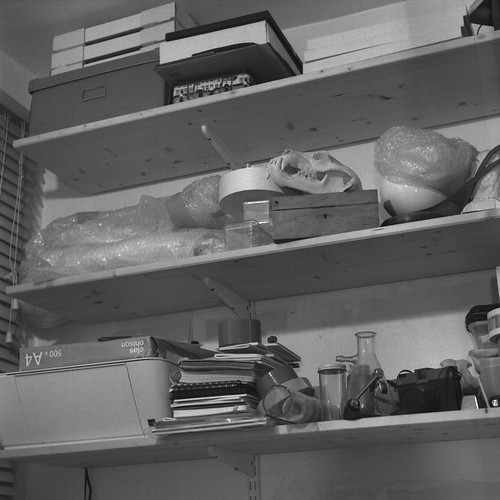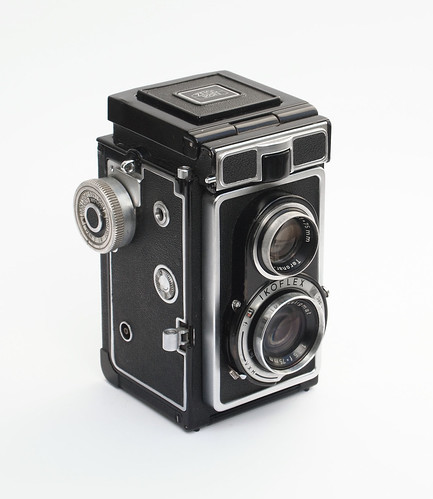 |
| Zeiss Ikon Ikoflex Ic |
The twin-lens reflex has been eclipsed by the popularity of single-lens reflex cameras. Excellent results are possible with some models of this design, however, and they often represent the least expensive way for a photographer to begin working in medium format.
Ansel Adams, The Camera, 1980
Twin lens focus cameras were around for many years before
Franke & Heideke introduced the
Rolleiflex, but, like the Leica with 35mm film, it became the archetype - and inspiration - for the many twin lens reflex cameras that followed, as well as establishing the 6x6cm square negative format. TLR cameras were produced by many different manufacturers for decades, the majority were made between the 1930s and 1950s, but the twin-lens reflex design fell out of favour from the early 1960s (notable exceptions such as the
Mamiya C series and the Rolleiflex itself, as more fully-featured, prestige cameras, were made until the 1990s and 2010s respectively).
I bought my original
Zeiss Ikon Ikoflex Ic in March 1996. It
was my entry into medium format as a student, being significantly cheaper than a Rolleiflex or MPP's contemporary
Microcord/
Microflex cameras, and a fraction of the price of medium format SLR cameras at the time. It cost £99 as a commission sale from a camera shop which meant there was no secondhand guarantee. A tutor at college described it as being "two-and-a-quarter-inch", and, although at that point I knew of medium format, I'd not heard it described as such before.
 |
| Zeiss Ikon Ikoflex Ic with HP5 Plus |
The above image is from the first roll of black and white film I shot with the camera. It's one of several shots made standing the Ikoflex on the floor for long exposures, easy to do with the typical twin-lens reflex waist level finder. The Ikoflex Ic I'd bought had a 75mm Novar lens, a cheaper triplet lens made by other manufacturers under license for Zeiss Ikon; it was also available with a f3.5 Tessar, but at the time I wouldn't have known to distinguish between a Novar and a Tessar. (Edit 30/11/18: looking through my images with this first Ikoflex - and images of the camera itself - I'm now sure that this was with the Tessar lens - although, again, I wouldn't have known the reputation of the lens at the time).
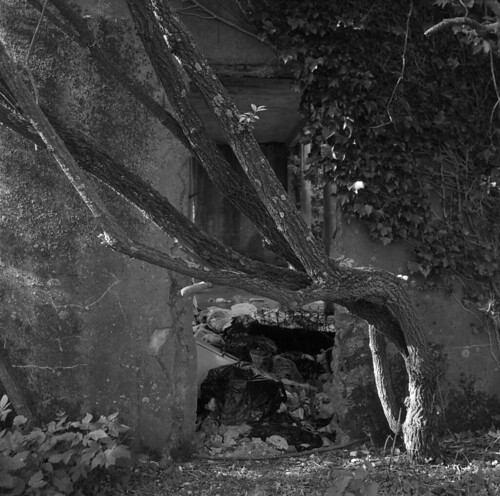 |
| Zeiss Ikon Ikoflex Ic with HP5 Plus |
The immediate difference in image quality with the shift from 35mm to medium format (even with a cheaper lens), and also the changing relationship of depth of field with longer lenses on the format, was clear from the first few prints I made from the negatives from the camera. The photograph above shot in May 1996 after I'd had the camera for a couple of months embodied these qualities almost perfectly - almost, as there appears to be a small amount of either a fall off in definition from the lens to the corners, or possibly a little camera shake in a twisting motion, nonetheless the quality of images like that above suddenly looked more
professional. Another student at college had a
Lubitel 166B, and it was very clear that the images, with vignetting and light leaks, were poorer quality in comparison to the Ikoflex.
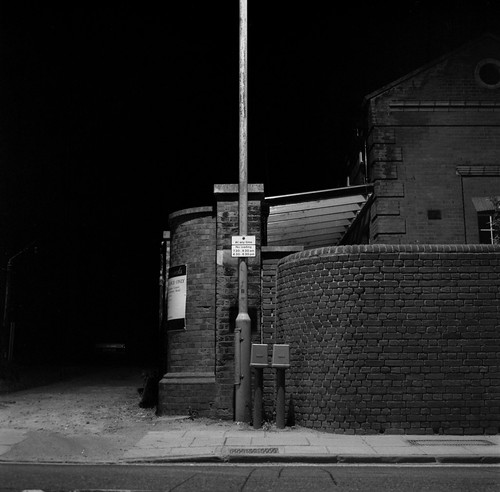 |
| Zeiss Ikon Ikoflex Ic with HP5 Plus |
The Ikoflex also served as my introduction to night photography, using the camera on 'B' with a tripod. To calculate exposure times, I set my Praktica SLR to the same aperture and counted how many seconds between the shutter opening and closing, without factoring in reciprocity loss. This method worked well enough with regard to the Ikoflex's selenium meter being unusable at night. While at college I mostly shot
Ilford HP5 Plus in the Ikoflex. On my contact sheets from the time I didn't write down developing details (curiously, I did so for most contemporary 35mm contact sheets). The developer at college would have been ID11, and usually used 1+1. Although I didn't write down any information about the developing, I also didn't push process any of the medium format at the time, which I had begun doing in 35mm. Later, once outside college and not having access to a darkroom, I shot a wider variety of films which I had professionally processed, mostly at Jessops. One film that I did use was
Delta 3200 (the film itself hadn't been introduced until after I left college) for some handheld night shots, possibly shot on 1/10th. I used the Ikoflex much less when I bought my first Canon A-1: I last used it frequently in 2000, and it was stolen in 2003. Unlike the
Canon A-1 or
Olympus Pen EE3, I didn't feel the need to replace the camera as soon as I could, (or even, much later, the
Brownie). However, a few weeks ago I saw an Ikoflex Ic in an online auction for half the price I paid for it twenty years ago, and bidding it up by a few pounds to nearer two-thirds that price, I won the camera. Ideally, I should have probably waited for a version with a Tessar, or the last Ikoflex model, the Favorit, but in replacing the Ikoflex Ic two decades on from first buying it provided a sense of resolution.
 |
| Ikoflex Ic with viewing hood and meter cover open |
The Ikoflex Ic was the penultimate model in Zeiss Ikon's TLR series. It has a typical frame size of 6x6cm on 120 medium format film, with a 75mm Novar or Tessar f3.5 lens, stopping down to f16. The viewing lens is a 75mm f3.5 Teronar. The Prontor SVS shutter has a full range of speeds from 1-300, plus B, and a switch marked VXM for self timer (V), electronic flash (X), and flash bulbs (M). The self timer on my camera doesn't work, and in my experience rarely works on Prontor shutters from fifty to sixty years ago. The shutter can appear stuck if the switch is inadvertently knocked on V, easy to do, but switching to X releases the shutter (I have wasted a few frames with my new camera this way). Both lenses are provided with screw threads, but in different diameters. The taking lens has a 35.5mm thread; externally, it will take 37mm push-on filters or hoods. Two windows around the taking lens display aperture and shutter speeds; the aperture settings have a red dot for a hyperfocal distance between f8 and f11.
The focus knob is on the left hand side of the camera when holding it. On my camera it's marked in feet denoting an export model. Close focus runs down to 3.6 feet, with depth of field markings, and a hyperfocal dot on the scale between 48 and 15 feet to correspond with the dot on the aperture scale. On the right hand of the camera is the shutter release - lower on the body than older Ikoflex models - and the cable release socket in the top corner position where the older cameras had the shutter release. The release pivots outwards for shooting, with the shutter locked when it is pushed in. This shutter release is key to the ergonomics of the Ikoflex: the weight of the camera is taken in the right hand while focusing with the left hand, but the thumb of the right hand operates the shutter and also helps steady the camera between both hands. I haven't used older Ikoflex cameras, but I can imagine having a shutter release on the top of the camera makes it less easy to use handheld. The right hand side of the camera also has the frame advance knob, with a film reminder with "PAN/IR/ORTHO COLOR NEG/POS" inscribed on it, the COLOR section doubled, presumably for tungsten or daylight film and the frame counter, with its reset dial, and a PC socket for flash.
The waist level viewfinder hood is nicely sprung to pop open when the catch is released on the body. Rather than just plain ground glass, the viewing screen is actually a fresnel lens (fine concentric lines can just be made out). There's a flip up magnifier lens for fine focusing, and the cover of the viewing hood with the nameplate itself flips up to create an eye-level sports finder. The viewing screen has ruled horizontal and vertical lines to aid composition, and also displays the lightmeter needle. The Ikoflex Ic's built in lightmeter was one of the reasons for buying it (not heard of the 'sunny 16' rule at the time). The cover on the front of the camera flips up, and the needle in the viewfinder has EV markings from 2-16; on the focusing knob there is a calculator on focus knob with ASA settings from 5-320, including -2 -4 adjustments for filter factors, where the EV numbers can be read off against shutter speed and aperture combinations. Exposure times are listed up to 60 seconds; whole seconds are marked in green, and can be seen appearing at the far end of the calculator in fast film settings with a high EV, which the manual warns about. The selenium meters on both cameras I've had worked perfectly well with black and white and colour negative film; there are some references online referring to the Ikoflex Ic having a CDS meter, but I've found nothing conclusive, perhaps some cameras were customised with CDS cells replacing the selenium meter.
The Ikoflex Ic has an automatic frame counter with double exposure prevention. This was initially confusing, and, with no manual available when I bought my first camera, had to be worked out by trial and error. The man in the shop when I bought the camera loaded it for me, and the frame counter reset fooled him initially: he got this to return to 1 after having wound a whole film through the camera. I found the very first film from the camera had only part of one frame exposed. The correct way to load the camera is to ensure the frame counter has passed '12', which will then freely rotate (this may have to be done manually). On loading the camera, the film is advance to the first frame using the red window on the bottom plate, then the frame counter is reset to '1'. Once the shutter has been fired, there is an interlock which prevents the shutter firing again before the film is advanced (it's possible to cock the shutter without advancing the film, but it will not fire).
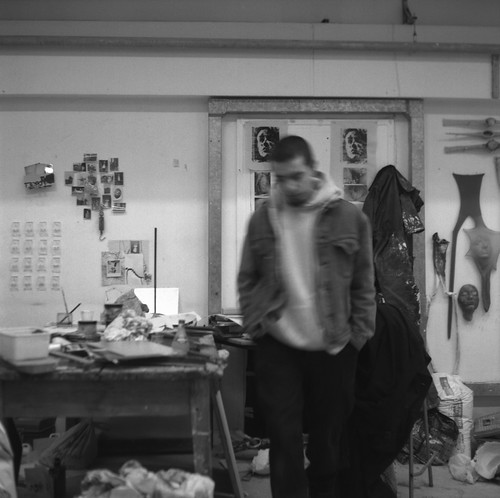 |
| Zeiss Ikon Ikoflex Ic with Ilford Delta 400 |
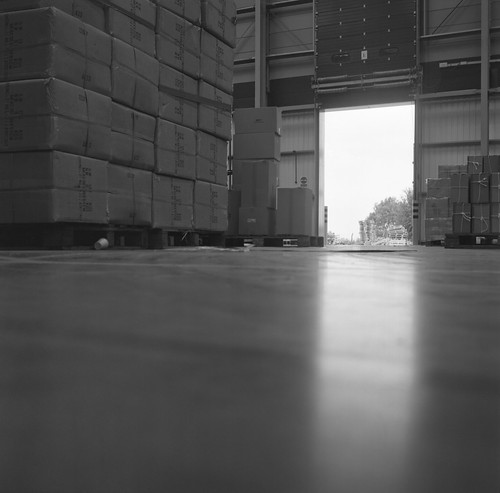 |
| Zeiss Ikon Ikoflex Ic with Ilford XP2 |
 |
| Zeiss Ikon Ikoflex Ic with Kodak Tri-X |
 |
| Zeiss Ikon Ikoflex Ic with Kodak Portra 160VC |
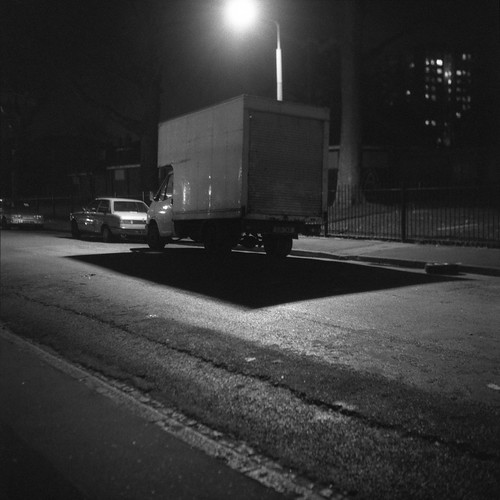 |
| Zeiss Ikon Ikoflex Ic with Ilford Delta 3200 |
When I first used the Ikoflex twenty years ago, the square format was a novelty and provoked more care taken over composition. This is partly helped by the lateral reversal of the image in the viewing screen, which does need some experience to become familiar. Although typically twin lens reflex images were often cropped when used professionally, composing to a full, square format is more challenging; picking up the camera again after many years brought this back with a distant sense memory of how it felt to use. It has also been an excuse to sort through old negatives, many of which I had never previously printed or scanned. Except for Kodak Portra 160, I didn't use any film slower than 400 ISO with my first Ikoflex camera - which was the case generally, in 35mm as well as medium format. Twenty years after first using the Ikoflex Ic, I recently shot some slower, finer grained films with the new camera:
Agfa Superpan 200,
Ilford FP4 Plus (rated 200),
Rollei RPX 25 and a roll of Kodak Plus-X with a develop before date of 03/2006, which I happened to finish on
Expired Film Day 2016.
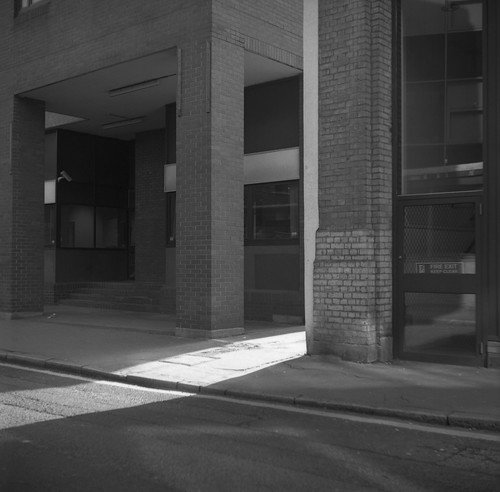 |
| Zeiss Ikon Ikoflex Ic with Agfa Superpan 200 |
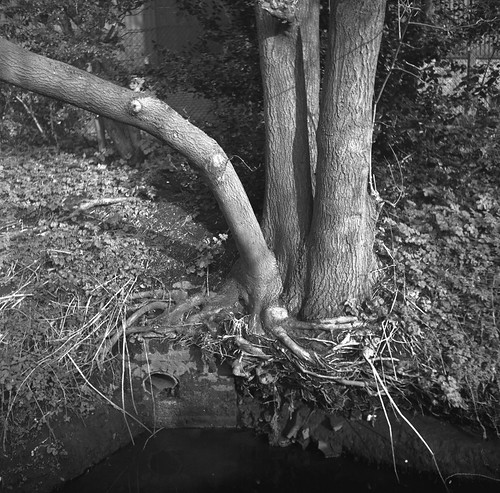 |
| Zeiss Ikon Ikoflex Ic with Ilford FP4 Plus at 200 |
 |
| Zeiss Ikon Ikoflex Ic with Rollei RPX 25 |
 |
| Zeiss Ikon Ikoflex Ic with Kodak Plus-X (develop before date 03/2006) |
Sources/further reading
Ikoflex range on TLR-Cameras.com
Ikoflex Ic on Matt's Classic Cameras
Ikoflex Ic on Early Photography
Ansel Adams, The Camera, 1980
